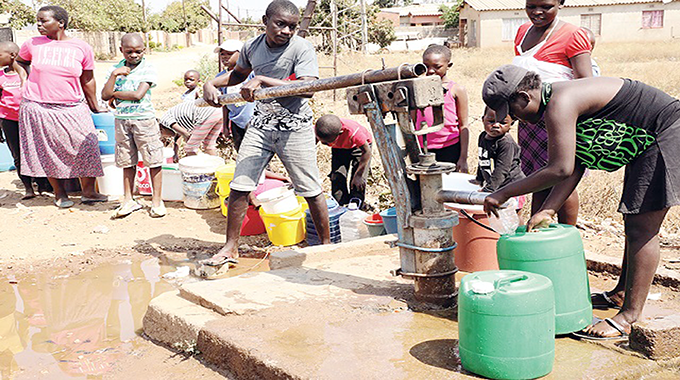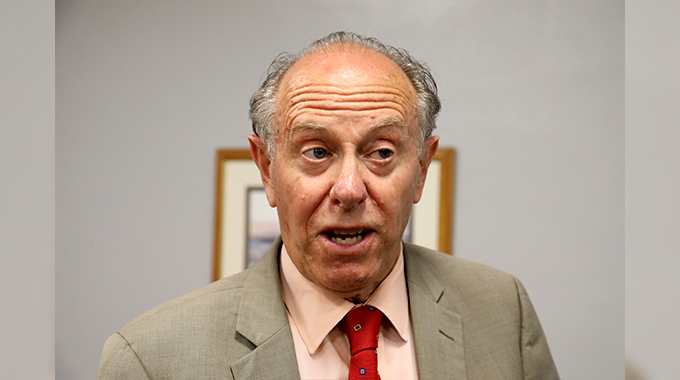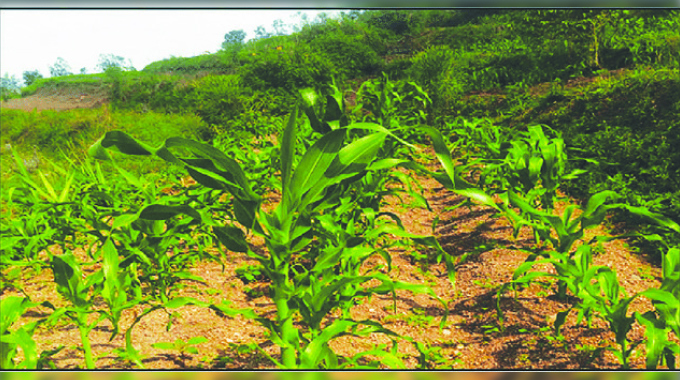Bulwayo water woes, public places in a health fix

Andile Tshuma
BULAWAYO residents have endured months of water cuts, going for up to 96 hours per week without the precious liquid. It’s not easy spending such prolonged periods without water, but people are surviving.
The rains over the past weeks brought hope to many Bulawayo residents, but dam levels remain at a critical 35 percent, a mere one percent gain from 34 percent recorded before the rains.
Considering the time of the year we are in, it is likely that the water shortage in the city will continue and the water cuts that we have endured will continue, if they won’t get worse. The problem with water cuts is the low levels of hygiene in most households and the city in general due to the absence of running water.
I think of public spaces such as churches and offices, if there is no running water and the stored water runs out, disaster looms. It can be a potentially catastrophic situation.
How do you even manage bathroom logistics? Because when nature calls, nature calls. It is harder if you have children in the house, the many trips to the bathroom vis a vis the dwindling water levels you would have stocked up in your containers.
I can imagine someone who has kids that need to be bathed and prepared for school, without water and electricity. It can’t be easy, yet we still survive.
Before you even imagine the implications, the inconvenience of going from one borehole to the next or one suburb to the other looking for somewhere to fill up containers, and having to brave the meandering queues for hours has humbled everyone.
Safe and readily available water is important for public health, whether it is for drinking, domestic use, food production or recreational purposes. Improved water supply and sanitation, and better management of water resources, can boost a country’s economic growth and contribute greatly to poverty reduction.
The water quality in the city has been questioned over the past weeks, with most people complaining of a muddy after taste in water and wondering how that happens when our water is treated.
However, the Bulawayo City Council (BCC) assured residents that the water is safe for consumption despite it having a muddy odour after residents complained over the water taste, fearing waterborne diseases.
BCC Director of Health Services Dr Edwin Sibanda said Council was aware that the water has an odour and reassured residents that there is no need to worry.
“There has been concern over an odour in the water system but as the health services department, we are monitoring the water quality specifically for the bacterial content that is likely to be associated with diseases as well as the residual chlorine. So far, our water is safe. We admit that there could be an odour but this is not a threat to human life,” Dr Sibanda said.
His sentiments were echoed by the city’s Director of Engineering Services, Engineer Simela Dube, who stated that the smell was due to the low dam levels of 35 percent.
“We plead with the public to bear with the local authority especially in terms of the odour that is in our water. We are now drawing water almost at the bottom of our dams which is naturally closer to the mud and we are directly pumping it to the treatment works. In the past, we had a raw water reservoir where water would be pumped in before it goes into the treatment plant,” Eng Dube said.
Bulawayo residents may wonder when the water cuts will be suspended but with the erratic rains, that time does not seem so near.
Coming from a period of tragic cholera and typhoid outbreaks that rocked the country recently, such long water cuts may bring fear and panic to Zimbabweans. It is a relief that Bulawayo has so far been spared from the water borne disease outbreaks.
Drinking water from storage containers brings about its own challenges. Water stored in secondary reservoirs means that one has to be extra sure that the containers are clean. The water is exposed to potential contamination as it may be stored in dirty containers or be handled by dirty hands.
According to the World Health Organisation (WHO), globally, at least two billion people use a drinking water source contaminated with faeces. Contaminated water can transmit diseases such as diarrhoea, cholera, dysentery, typhoid, and polio. Contaminated drinking water is estimated to cause 485 000 diarrhoeal deaths each year.
When water comes from improved and more accessible sources, people spend less time and effort physically collecting it, meaning they can be productive in other ways. This can also result in greater personal safety by reducing the need to make long or risky journeys to collect water.
Absent, inadequate, or inappropriately managed water and sanitation services expose individuals to preventable health risks. This is particularly the case in health care facilities where both patients and staff are placed at additional risk of infection and disease when water, sanitation, and hygiene services lack. — @andile_tshuma










Comments